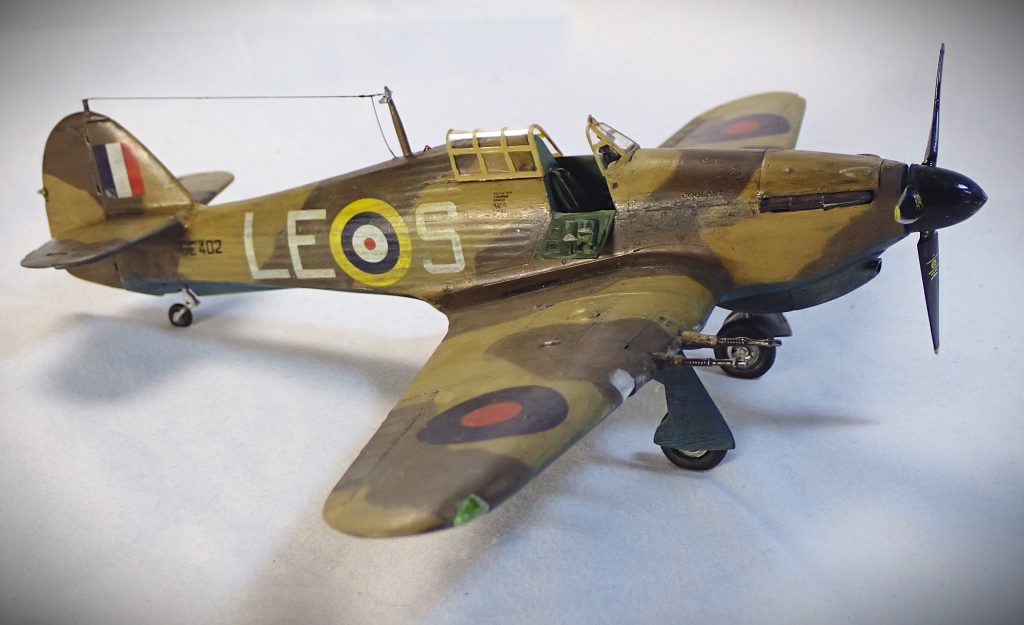The Hurricane Mk.I was established in 1937, but Hawker Aircraft was already working on a better type, the Hurricane Mk.II, which was flight tested in June 1940. The Mk.IIC was armed with four Hispano-Suiza 20mm cannon, a modified wing using stretched metal as opposed to the original stretched fabric, and the more powerful Merlin XX engine. It entered service in late 1941.
By 1942 the Hurricanes were outclassed by the newer German fighters and so were withdrawn from frontline service in order to concentrate on ground attack and night fighter roles. The Mk.II was ideal for this purpose with its cannon armament. At low level the Hurricane was still a formidable weapon in the RAF’s arsenal. With the addition of external bomb racks the Hurricane Mk.II could be armed with two 250lb or 500lb bombs
The Hurricane Mk.II Tropical version differed only slightly with the addition of a tropical air filter under the nose, an extension of the existing air filter which made for a misshaped profile. The ‘Trop’, as it was known, served extensively in the North Africa campaign and the Mediterranean theatre of operations. The Mk.IID was a Mk.II with the addition of two 40mm cannon pods under each wing used for tank busting duties in the North Africa campaign and proved quite useful although was vulnerable to flak, enemy fighter or ground fire. The Hurricanes of No.6 squadron were so efficient in this role that the squadron was nicknamed the ‘Can Opener’ squadron.
The Hurricane Mk.II was used by the RAF as a home defence night fighter achieving great success in dispatching German bombers. The very last Hurricane built was a Mk.IIC PZ865 in 1944, the last of over 14,400 built of all variants.
Some Hurricanes were built in Canada and shipped over to the UK. Some 234 were received and immediately stripped of their American built Merlin 29 engines to be used in Lancasters. The Canadian built Hurricane Mk.XII, a modified Mk.IIB aircraft, had twelve Browning .303 machine guns, six in each wing. Many Hurricanes were converted for use as Sea Hurricanes aboard Catapult Armed Merchant (CAM) ships. These were mostly worn-out Battle of Britain machines which were launched by catapult from the ship but not recoverable, the pilot having to bale out and be picked up by the vessel. Around 400 Mk.II’s were built as Sea Hurricanes for use on carriers but were quickly superseded by Seafires and the newly acquired Grumman Martlet.
There are two airworthy Hurricane Mk.II’s from 1944 which are both attached to the Battle of Britain Memorial Flight (BBMF), PZ865 and LF363. Another 14, including 3 Sea Hurricanes, are kept in prime flying condition around the world. There are a multitude of static display examples all over the world. In the UK alone there are at least 12 at various museums. The oldest is displayed at the RAF museum at Hendon, Hurricane Mk.I P2617, which served with 607 squadron in 1939 and the Battle of Britain. There is also a superb example at the Science Museum and a stunner at Cosford.
